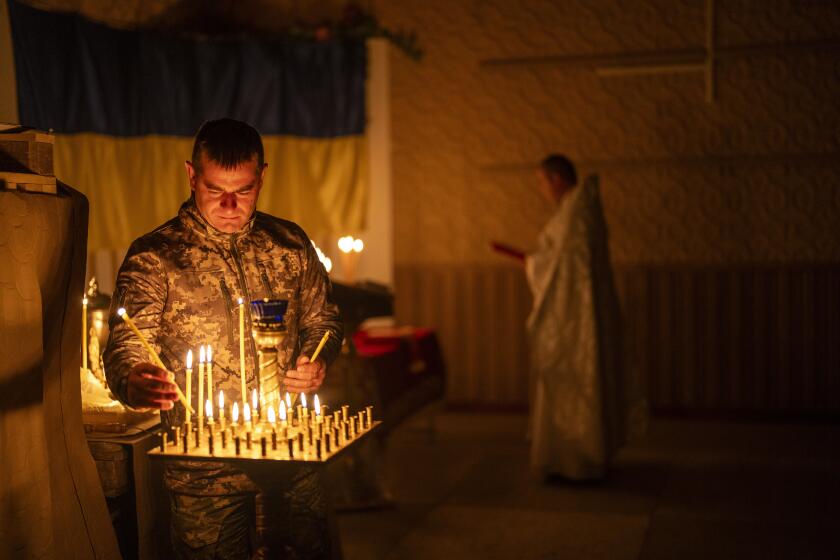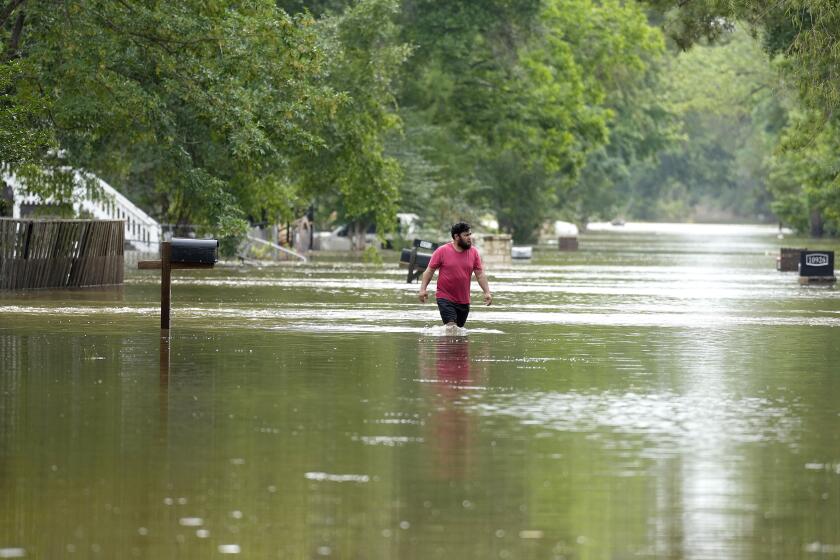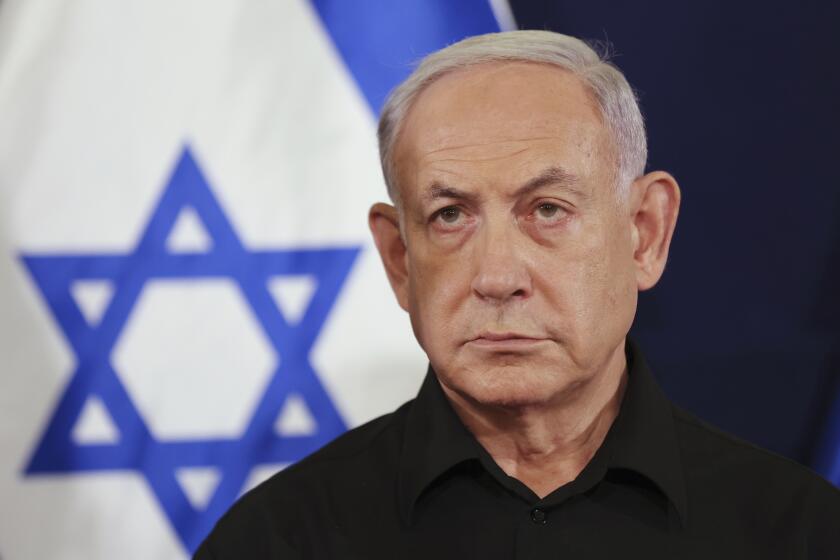Facing horror, Aurora’s emergency responders kept their cool
AURORA, Colo. — It was 12:39 a.m. Friday when the normal rhythms of Aurora went horrifyingly awry.
The first inkling came in a dispatcher’s message, spoken as if the events unfolding at the Century 16 theaters were somehow matter-of-fact.
“They are saying someone is shooting in the auditorium.”
Police cars roared into the parking lot of the suburban Denver theater minutes later to find moviegoers splayed outside, sobbing and screaming for help, their arms and faces caked in blood.
PHOTOS: ‘Dark Knight Rises’ shooting
And inside, officers were soon to discover, was an even more gruesome scene.
“I have seven down in Theater 9! Seven down!” an officer bellowed, according to dispatch recordings that capture the aftermath of one of the nation’s deadliest mass shootings.
His estimate would prove to be low.
During a 12:05 a.m. screening of”The Dark Knight Rises,”a shooter wearing a gas mask had unleashed a torrent of gunfire into the audience and then slipped out of the theater. Twelve people were killed and 58 injured; at least seven of the people who remain hospitalized are in critical condition.
WHO THEY WERE: Aurora movie theater victims
The shooting rampage thrust the Police Department, firefighters, paramedics, doctors and other medical workers into a mass casualty response. On Saturday, officials praised the work of those who had so suddenly been deluged with gunshot victims.
“If there is a silver lining,” Aurora Mayor Steve Hogan told reporters, “it’s that we didn’t lose more lives. And it’s because our first responders not only did their job, they went above and beyond.”
The dispatch recordings — archived by RadioReference.com and available on the Denver Post website — and interviews with first responders depict a well-oiled team of law enforcement and medical personnel. No squabbling, no hysteria, despite the terror that confronted them.
TIMELINE: Mass shootings in the U.S.
Victims had been struck in the head, neck, chest and arms by shotgun, handgun and high-velocity rifle ammunition. Before help arrived, other moviegoers tended to them.
Eric Hunter, a radiology technician, had been watching the Batman movie in the theater next to the shooting. He and an off-duty paramedic aided two terrified teenage girls, one of whom had been shot in the face.
“Please help me!” one of the girls had begged him. “Please help me. God, he’s coming back.”
Even those who escaped injury were splattered with blood and muck, complicating efforts to determine who needed to be treated first. Ethan Rodriguez-Torrent, 22, had helped a female friend who was shot in the head hobble out of the theater.
“I was covered in her blood, basically,” he recalled. “On my legs and some on my arms.”
As paramedics raced to the scene, each dispatch update revealed more awfulness:
“There is at least one person that’s been shot but they’re saying there’s hundreds of people just running around.”
“Somebody’s still shooting in Theater 9. Be advised, I think somebody’s sprayed some gas over there too.”
Authorities hopped out of their vehicles and fanned out across the theater complex, part of an unassuming shopping center across the street from a public library. Almost immediately, they spotted a white car outside. Standing next to it: a man in a gas mask.
Was it the suspect?
“Yes!” an officer called into his radio. “We’ve got rifles, gas masks, you can see him. I’ve got an open door going into the theater. OK, hold that position, hold your suspect!”
Police arrested a man named James E. Holmes, 24. He had a degree in neuroscience and, they later discovered, an apartment laden with explosives.
Meanwhile, officers were working their way through the carnage in Theater 9. They found 10 bodies. Two more people died at the hospital.
Other colleagues rounded up the wounded. A video posted on YouTube shows a parking lot aglow in red and blue emergency lights. The voices of the first responders are muffled under the sounds of sirens and screams.
“Help me, please! Hold it up!” a man cries out, referring to one of his limbs. “I can’t hold it up no more!”
The scanner crackled with requests for aid. A woman shot in the leg. A man crumpled outside Theater 9. At one point, an officer announced what no one wanted to hear:
“I’ve got a child victim. We need a rescue in the back door of Theater 9 now.”
Dispatchers called in ambulances from all over the Denver area, but some people were too badly injured to wait. So police began driving victims to hospitals.
Around that time, Dr. James Denton was called into the Medical Center of Aurora, one of several hospitals where victims would be treated. In the brief time it took him to drive there, 15 patients had been admitted and one was already in the operating room.
Denton sized up each victim: some in rooms, others sprawled on beds that had been hurriedly set up in the hallway. They were a bandaged and bloodied lot, and some grimaced in pain. But Denton heard few complaints.
“I think they knew other people were worse off than they were,” he said.
The staff had no idea whether more victims were en route. They called in help. The medical center soon teemed with five trauma surgeons, two neurosurgeons, two orthopedic surgeons, several emergency room doctors and a host of nurses and technicians, some of them from other hospitals. Only three more patients eventually arrived.
Around 6:30, when trauma services director Tracy Lauzon rushed in, there was a brief scare. Police, she said, had been told a distraught relative of one of the victims was headed to the hospital with a gun. Officers scoured the intensive care unit. Nothing.
For the first time that day, it was a false alarm.
Powers reported from Aurora and Gordon from Los Angeles. Times staff writer Alexandra Zavis and correspondent Jenny Deam in Aurora contributed to this report.
More to Read
Start your day right
Sign up for Essential California for news, features and recommendations from the L.A. Times and beyond in your inbox six days a week.
You may occasionally receive promotional content from the Los Angeles Times.







